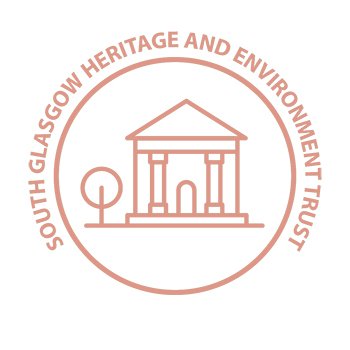FEATURED
Queen’s Park Train Station
Queen’s Park train station on the Cathcart Circle Line opened on the 1st of March 1886. It was Scotland’s first suburban railway line, designed to serve the growing suburbs around the expanding City of Glasgow.
The Caledonian Railway Company had won the right to build the line but to raise the money required, a new company had to be formed, which came to be known as the Cathcart District Railway Company. The chairman was George Browne, a shipping magnate and the first Provost of the Burgh of Crosshill, who was keen to ensure that the line came through Crosshill and residents could travel quickly to and from Glasgow city centre.
The Split Nursery
Queen’s Park Train Station was built through a nursery called Hutchensontown Gardens. For a year or two, the nursery still operated on either side of the station. There was no Niddrie Road to the west of the station, just a path leading to Pollokshaws Road, past a blacksmith’s forge.
The bridge over Victoria Road, in fact all the bridges on the line were built by James Goodwin & Co. from Motherwell. Their stamp can still be seen on most of the bridges. In 1886, when the line first opened, it only went as far as Mount Florida, then a few weeks later a station was opened at Cathcart. The circle line back to Central Station wasn’t completed until 1894.
The Longest Platform
Queen’s Park was the longest platform of any station on Cathcart line. Originally, the intention was to have separate stations on Pollokshaws Road and Victoria Road, but the availability of land and the extra cost involved, thwarted that idea, a long platform, stretching most of the distance between the two thoroughfares was the compromise solution. A long platform may also have been considered useful if Central Station was ever temporarily unavailable.
By 1887, there were 32 trains running each way, each day, 6 days a week. The influence of Sabbatarians ensured the line remained closed on Sundays. Each train had 9 four-wheel coaches with gas lighting and steam heating. On Saturdays the line would be especially busy, taking football fans to the nearby Cathkin Park and Hampden Park to see Third Lanark and Queen’s Park, titans of the Scottish game.
Snooker Tam
A novel was written in 1919 called ‘Snooker Tam and the Cathcart Railway’ by a retired officer, Captain Robert William Campbell. Tam was a young man, just out of school, called on to serve on the railways while older men were at war. Tam earned his nickname because the tip of his nose was shaped like the tip of a snooker cue. He served at a fictional station on the line called Kirkbride, which was apparently very close to Pollokshields East, just one station to the north of Queen’s Park and in the course of his duties, is caught up in a drama involving a German spy. Both Pollokshields East and Queen’s Park were closed during the war, so it’s tempting to believe Kirkbride was here, at Queen’s Park.
The 20th Century
The Railways Act of 1921 led to the grouping of many railway companies, so in 1923, both the Caledonian Railway Company and the Cathcart District Railway became part of the London, Midland and Scottish Railway Company. Electrification had been discussed as early as 1909 but the line was finally electrified in 1962. For Queen’s Park, this meant the wall on Torrisdale Street had to be heightened to accommodate new equipment. That same year, the line finally opened on Sundays.
In 1990, the platform was truncated and reduced in length by about 30 metres and replaced with a simple path, surrounded by a fence leading to the Niddrie Road entrance. The most likely explanation for the truncation is that this was to reduce the cost of maintaining such a long platform. The trains of the time were much shorter than the platform. Many other stations were being refurbished around this time.
The station building at Queen’s Park is now a protected, B-listed building. In 2011, the former ticket office and waiting rooms were converted into an arts and exhibition space, now run by a Queen’s Park Railway Club. The new ticket office now occupies the eastern part of the building. In 2018 – 19, there were over 750,000 passenger journeys to or from Queen’s Park Station.
By Bruce Downie, author Loved and Lost: Govanhill’s Built Heritage (2019)
If you want to learn more about local heritage why not buy one of our books on the topic?
We’ve published South Glasgow Heritage Trails: A Guide (2019)
Stories from the Southside (2019)
and City of the Dead: A Guide to the Southern Necropolis (2017)
Platform before and after advertising boards © Canmore.
Maps © National Library of Scotland.
All other images © Glasgow City Archives.
















Really interesting stuff, Bruce. Cheers!
Really interesting. Lived in both Prince Edward St and Torrisdale St. Before the lockdown travelled through Queens Park every day to work. Knowing it’s history makes the journey better.